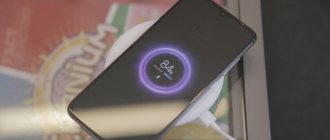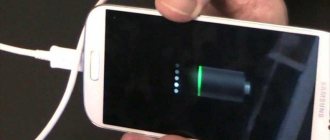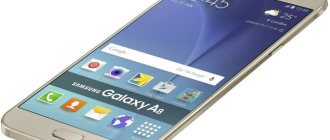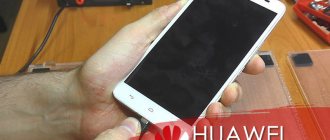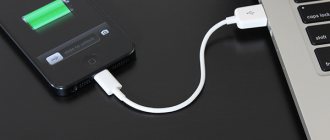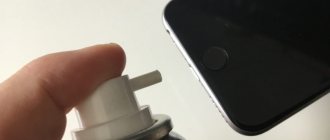A power bank charger is a practical accessory that is difficult for owners of smartphones, tablets and other portable equipment to live without. When it is at hand, there is no need to worry about the gadget running out of charge at the wrong time, leaving the owner without communication or access to the Internet. But buying a power bank does not eliminate all problems. About 35% of users complain that the device suddenly stops charging. There are also many who observe slow charging of the gadget from the battery or a complete lack of charging. Let's figure out why the power bank is not charging and/or the phone is not charging.
Power bank does not charge the phone: possible reasons
Every owner of a smartphone or any other portable device is familiar with a power bank charger (“power”, “power bank” - that’s what it’s called in common parlance). It is very convenient to use because the phone can be recharged at any time. However, many have to face the problem when the power bank does not charge the phone for some reason, even if the instructions for its use are strictly followed. It may also happen that the device is working very slowly. In any case, do not rush to contact repair services: you may be able to eliminate the cause yourself.
What could have happened
Before you start dealing directly with the power bank, you should understand whether this is the essence of the problem. It is quite possible that it is the phone that is working poorly, and not the device for charging it. First of all, connect your phone to another charger and watch what happens.
The USB cable used may also be the reason why the power bank does not charge the phone: for example, the cable is damaged or bent too much . Therefore, you need to carefully examine it for external damage. If they were found, all that remains is to replace the old cable with a new one. Or immediately purchase a higher quality USB device.
When the problem is in the device itself
If the power bank was purchased recently or has not been used for a long time, you can try recharging it for 8 hours . The fact is that while the device was lying in a warehouse and not being used, the chemical processes inside it could slow down significantly, which is typical for lithium-ion batteries even when they are not working. It is quite possible that this is why the power bank does not charge the phone. When it is “boosted,” the substances that slow down the battery will disintegrate, and the device will produce the required amount of energy.
It happens that at first the charging process goes on, and then begins to be interrupted. Since all power bank chargers are made in China, it is not surprising that the capacity indicated on the charger does not correspond to its actual level. Of course, a power bank with a real capacity of 2000 mAh will not be able to fully charge a smartphone whose battery has a capacity of 3000 mAh. To the question of what to do next, there is an extremely simple answer: buy a charger with a capacity at least twice the capacity of the phone .
There is another reason why the powerbank first charged and then stopped charging the phone. Often the controller turns off the process if there is overheating or some kind of malfunction. Contacts may also be weak or faulty. In these cases, it is advisable to contact a repair and service center.
Many owners are forced to charge smartphones from a power bank only when the devices are turned off: otherwise they charge very slowly or take much longer. Naturally, in this way it is impossible to simultaneously charge the phone and search for something on the Internet, this is very inconvenient.
Low charging speed may have the following reasons:
- the controller has failed or has an internal defect;
- the initial current strength is insufficient (the power output current is 1 A, and the phone is 1.5 A);
- the cable is thin, of poor quality - reduces the voltage indicator;
- Several devices are connected to a phone with a small battery capacity.
First of all, you need to do the following: check the output current readings on the connectors of the charger and phone . If the amperage is different, the device should be changed. The thin cable needs to be replaced with one whose quality and conductivity will be better - you can buy it in specialized stores or order it online.
In order to know what to base your assumptions on why the powerbank does not charge the phone, it is advisable to know exactly the capacity of both the device and the charger , without relying only on the labels of Chinese manufacturers.
What else can interfere with full charging?
Some users like to download intensive applications and games from the Internet onto their devices. This means that the phone will now take much longer to charge. In the first days this is not noticeable, but later it can greatly affect the charging speed. In addition, if the powerbank charges the smartphone poorly, you can try to calibrate the battery of both it and the phone (by discharging it to zero and charging the devices again). It is recommended to do this three times and, if there are no other problems, the essence of which was described above, this method will be effective. There is no need to contact the service center.
Sometimes, when the smartphone is actually fully charged, the program incorrectly displays the charging indicators. For a more accurate check, you can try to charge the phone yourself simply from a 220 V network.
If your phone won't charge at all
It happens that the purchased power bank is simply incompatible with a particular device model.
The main signs of such incompatibility are that a natural accumulation of energy occurs in the device when it is plugged into the network, it begins to blink, but nothing happens to the phone. There is only one way out: try connecting a phone of a different model and check how charging will happen. If the power bank charges another device without any problems, you will have to exchange it for another, having previously clarified the issue of compatibility with consultants.
If everything was fine with the charging process before, and suddenly the power supply stops working, the problem may lie in one or the other battery, as well as in the condition of the connector and board contacts. Errors in operation and mechanical damage, of course, can also cause failure of a particular device. If the phone is already more than three years old, you should keep in mind such a phenomenon as the natural percentage of battery wear, and then it is not at all surprising that the battery on the phone does not charge. Read about the service life of lithium-ion batteries here →
Of course, before you get upset and contact the service center about problems with your power bank, it will never hurt to carry out a few simple and accessible steps yourself. At least in this way it will be possible to find out what the cause of the malfunction may be, and, based on this, make the appropriate decision.
Source: https://batteryk.com/power-bank-ne-zaryazhaet-telefon
What could have happened
Before you start dealing directly with the power bank, you should understand whether this is the essence of the problem. It is quite possible that it is the phone that is working poorly, and not the device for charging it. First of all, connect your phone to another charger and watch what happens.
The USB cable used may also be the reason why the power bank does not charge the phone: for example, the cable is damaged or bent too much . Therefore, you need to carefully examine it for external damage. If they were found, all that remains is to replace the old cable with a new one. Or immediately purchase a higher quality USB device.
The power bank is not charging, the power bank is not charging the phone - reasons
A power bank charger is a practical accessory that is difficult for owners of smartphones, tablets and other portable equipment to live without. When it is at hand, there is no need to worry about the gadget running out of charge at the wrong time, leaving the owner without communication or access to the Internet. But buying a power bank does not eliminate all problems. About 35% of users complain that the device suddenly stops charging. There are also many who observe slow charging of the gadget from the battery or a complete lack of charging. Let's figure out why the power bank is not charging and/or the phone is not charging.
Determining problems
When the charger was purchased not so long ago or has not been used for a long period, you can try to recharge it for at least 10 hours. The problem is that while the device was lying around in a warehouse and not being used, the chemical processes in the battery could have slowed down significantly, which is typical for lithium-ion batteries even when they are not functioning. It may well be that he does not charge his mobile phone precisely because of this. When “swinging”, the elements that slow down the battery will disintegrate, and the device will produce the required amount of energy; you need to make sure of this by trying to charge your smartphone.
It happens that the charging procedure starts at first, and then stops. Since most of the autonomous chargers are imported from China, it is no wonder that the capacity coefficient shown on the charger does not correspond to its real level. Undoubtedly, a power bank with a genuine capacity of 2500 mAh will not be able to fully charge a phone whose battery is 3500 mAh.
What to do if the Power bank does not fully charge the battery of your smartphone or tablet
Due to the fact that a modern person spends half of his life on a smartphone, using applications, the Internet, a camera, etc., the battery is greatly discharged. And it doesn’t matter whether the user is at home or at work, in nature or in a restaurant, the mobile friend is always active. To maintain the battery charge, an external energy storage device was invented. It helps out always and everywhere, but it happens that the Power Bank does not charge the phone. This article describes all possible breakdowns and ways to solve them.
External battery and its correct choice
A power bank (portable charging device) is an energy storage device that can power a device in circumstances where outlets are inaccessible.
A portable charger has become a lifeline for the modern user, because with its support there is no need to worry about low battery levels if you are using the gadget dynamically.
The use of external battery chargers is quite widespread:
- A tourist expedition where there is no access to electrical outlets.
- Long flight or train ride.
- Active use of the device if the capacity is not enough for a day.
- Low power of the integrated battery.
Choosing the right external battery is quite a difficult task, due to the fact that they vary in size and characteristics. For example, many power banks can only charge one phone, therefore, if you want to power something larger (such as a camera), you will need a stronger external battery. It is worth considering that the rated power declared by the manufacturer is 20 percent less than the real one, so take it with a margin.
Current strength
The output voltage, measured in amperes, sets the speed level of the Power bank with which it is capable of charging your gadget. The higher the power output, the sooner the mechanism will charge using the compatible USB cord. You can choose a device with an output power of 1A or 2A. Most smartphones easily accept a current of 1 A, however, for tablets it is desirable to have more power, otherwise such a device will take quite a long time to charge. It is best to take an external battery that is supplied with a current of at least 2 A.
If possible, ask the seller if the device supports Quick Charge 1.O, 2.O or 3.O. It will make it possible to quickly charge devices compatible with this technology.
Full charge again
As they say, the situation is the other way around. The battery charge has been fully restored, but you keep forgetting to disconnect it from the charger. This may also later manifest itself as a malfunction of the power bank.
Those who are inexperienced in this matter may think that the non-blinking indicators also represent a battery malfunction. However, this action on the part of the indicator only symbolizes the full charge of the external drive.
Rules and troubleshooting if charging the Power bank goes wrong
Check your computer, install one of the games.
Or ask me which is better to buy a new computer or laptop (I’ll tell you): (WoT for any PC or laptop) OR (for a powerful PC or laptop try WoW) Greetings to all readers of my blog! We continue to disassemble portable batteries.
The cost of a good Power bank is significant enough to put up with a rapid loss of performance. To extend the life of your device, you need to know how to charge a power bank correctly. I am Rostislav, I recommend reading the entire article and some comments, in case you have a similar problem, and we have already solved it a long time ago.
We will talk about this today, and also analyze the situation when the Power bank does not charge: what to do, how to identify the cause and try to eliminate it yourself.
Charging the power bank correctly
To begin with, the new power bank needs to be “pumped”. First of all, we charge the battery to 100% (according to the rule, you should receive a portable device with 70 - 80% charge). It is not possible to pre-discharge new modern batteries, as was previously recommended. Next, be sure to carry out 2 - 3 cycles of complete discharge and charging to 100%. Such manipulations will allow you to “boost” the maximum possible battery capacity.
The next important recommendation on how to properly charge a power bank is to always “fill” the “energy storage” to 100% and not immediately disconnect it from the network for “trickle” charging. It is carried out at low current strength, after the 100% indicator on the case lights up. The beginning and end of this process can be monitored using a USB tester. When a value of 0.1 - 0.05 A appears on its display instead of 1 - 1.5 A, then “drip” charging has begun. The battery will be charged to maximum if you wait until it resets.
You should not allow your portable battery to constantly discharge completely. It must be connected to the power supply when the critical threshold of 20% is reached. In this case, there are two ways to charge the device: from a stationary 220 V electrical outlet via an AC adapter and from a computer via a USB cable. The first method is the fastest and most preferable. At the same time, there is the concept of battery calibration, which implies its complete discharge. To prevent various malfunctions, such calibration should be carried out once every 3 months.
The battery charge level is displayed on an LED indicator (the more lights are on, the higher the charge) or on the display (shows the exact percentage). It is recommended to always allow the power bank to “feed” completely. Short-term recharging is harmful to a lithium-ion battery, despite manufacturers' assurances that there is no memory effect. It’s unfortunate, but such an effect exists, and such irresponsible handling of the device will lead to the inability to charge it 100% in the future.
Another common question from buyers is how long does it take to charge an external battery? There is no universal answer for all models, since the time depends on the energy intensity, the presence of an additional fast charging function, and the current strength in the network (more precisely, on the value that your adapter produces).
If we talk about 5 or 10 thousand units for smartphones, then they require an average of 12 hours of recharge. High-quality models with a capacity of 20,000 mAh for laptops are equipped with a fast charging function and, surprisingly, require only 3 - 4 hours.
You will, of course, find more detailed and accurate information regarding the purchased device in the user manual or operating instructions.
What to do if the portable battery does not charge?
When we connect the power bank to an electric current source, the indicator immediately lights up and flashes until the process is completed. At the same time, there is no need to constantly wake up at night in order to promptly disconnect the charging gadget from the network. Most models have overcharge protection and automatically turn off when the battery is completely full.
But what to do if the real situation does not develop according to the manufacturer’s scenario? Why did an external battery that had been in service for months suddenly stop charging? The most common reason, according to service center specialists, is a broken wire in the port socket. As a result, you insert the cable into the connector, but no current flows. There is one way to fix such a malfunction - solder the contacts.
Problems with the device (the gadget itself)
Although this point is not directly related to the topic of this article, it should nevertheless be said that sometimes the phone itself can be to blame.
The most obvious faults may be the following:
- the battery life has expired;
- the port connecting the device to the power bank is damaged;
- operating system failure;
- The charging software is infected with a virus.
Here the solution is obvious - a service center. Self-repair is not provided.
Problems charging your phone from an external battery
When you connect the phone to a portable battery, its charging process does not proceed as normal and it is not possible to charge it. Or it discharges very quickly. Or the charge lasts a few seconds and stops. What to do if the external battery does not charge the phone - we consider possible options and give answers.
Cleaning port contacts
The inside of the phone is more clogged for some, less so for others, but one way or another, it gets clogged. Small specks, fabric pellets, dust, as well as “shipwrecks” stuck inside the ports can cause power failure inside the phone. Cleaning will return the smartphone to working condition.
IMPORTANT. Do not charge in a humid or hot environment. If connected to a power outlet for too long, the contacts can fuse with the plastic and even cause the batteries to explode. — Protection mechanisms do not always work! And factory defects are no exception.
Damaged phone charging connector
Despite the number of charge-discharge cycles, the phone battery does not last forever. Usually it will work without problems for two years. But over time, it becomes more and more difficult for it to retain (accumulate) a charge. You need to make sure it works.
If there is deformation or swelling, corrosion, replace the element immediately.
Try to use a battery recommended by the manufacturer.
ADVICE. An interesting simple way to check a non-removable element is proposed - try to screw it on a flat table like a spinning top: the problematic one will easily screw up.
If you can’t fully charge the battery from an external battery, you should try charging it from a regular wall outlet. In this case, the amount of electricity supplied can be up to two times higher than when supplied via a USB port.
Try charging your smartphone from a wall outlet
"Power Bank"/wire
Another reason for insufficient power supply may be the use of “foreign” devices. In this case, the strength or power of the current supplied to the battery may not be enough to accumulate the resource.
Calibration
Sometimes modern devices make unnecessary mistakes. For example, the phone turns itself off due to the fact that “it considers” its charge to be less than it actually is - no more than two or three percent. And the corresponding message is sent to the system. Although the gadget is charged.
Calibration is precisely the process of “training” the battery to its capabilities. Helps solve many nutritional problems before they arise. It is worth doing this before you have to upgrade the batteries with new ones.
It is necessary to calibrate the smartphone
Update-rollback
Application updates, firmware installations and rollbacks to previous versions can also cause disruption to the flow of electricity.
This is explained by the fact that new devices are optimized for modern versions and are equipped with more powerful batteries. But those purchased even a couple of years ago cannot always cope with the load.
Therefore, if you notice a sharp change in the efficiency of a gadget, you should try to roll back its software. Although it happens that the new version actually reduces the exorbitant energy consumption.
Availability of current in the outlet
If the above methods do not work, you should really check for voltage in the outlet or USB port. As funny as it may sound, this is also possible.
https://www.youtube.com/watch?v=O9fuemg7Fzk
The last option is to replace the portable device.
Viruses
Through various network windows, the phone can be infected with viruses. Some of them, due to excessive activation of some application, can deplete the energy reserve (for example, the Carib virus seriously activates Bluetooth).
IMPORTANT. You cannot do without visiting a service center in the event of a sudden discharge due to a vibration or sound signal. This occurs when there is a problem with the power amplifier.
Source: https://nastroyvse.ru/devices/raznoe/problemy-zaryadki-telefona-ot-vneshnego-akkumulyatora.html
Tips for daily use
To ensure that your portable battery lasts for many years, you should listen to the recommendations of experts:
- Do not disconnect the battery from the cable while charging. Such actions are detrimental to Li-Ion batteries. Over time, the capacity will decrease significantly and the device will quickly discharge.
- After connecting to the charger, you must wait until it is fully charged.
- It is strictly forbidden to store the power bank in damp and hot areas.
- Do not overcool the device.
- If the battery will not be used for a long period of time, its charge level should be between 50 and 80 percent.
- Do not try to charge the battery from a computer. The USB port is not capable of full charging due to lack of voltage.
The Power Bank charge indicator is flashing, but charging is not happening, this is a cause for concern. However, this does not mean that the power supply is already broken and it is time for a replacement. You may have connected the charger to the Power Bank incorrectly. If the problem persists, you should contact a professional. Do not attempt to open the case and repair the battery yourself.
Power Bank stopped charging
A power bank for charging a phone, laptop or other low-power devices can only be used after the battery has accumulated a certain amount of electricity.
If for unknown reasons the external battery is not charging, then you will need to find out the reason for this non-standard “behavior”. This article will talk about why a power bank may not charge.
Causes and methods of solving them
There are many breakdowns and deviations in the operation of the device, due to which the portable battery may not charge. Broken wires and charger malfunction are the most common causes, but “original” conditions of this type of electronics also occur.
When trying to find out why the power bank is not charging, you must first carry out the simplest steps to detect the problem. In some cases, it may be necessary to disassemble the product body and replace rechargeable elements. This is a last resort measure that should only be used when other repair methods have failed.
Power Bank stopped charging altogether
If the charge of the power bank is turned off from time to time, then such a breakdown can be very difficult to determine. When the portable battery has stopped charging altogether, it is enough to carry out diagnostic measures, after which in 99% of cases it will be possible to accurately determine the cause of the malfunction.
Lack of electricity in the network
If, when you connect a portable battery to a charger, it does not begin to charge, or the process is abruptly interrupted while restoring the charge, then before taking any complex actions, you need to make sure that there is electricity in the network.
In some cases, it is not enough to determine the presence of electricity in a house or apartment. If you previously plugged a powerful electrical device into the outlet, the contacts could have burned out, so you should definitely make sure that this element of the electrical fittings is working.
Source: https://istochnikipitaniy.ru/power-bank/ne-zaryazhaetsya.html
Running applications
Some programs for phones have “heavy” filling that heavily loads the system and processor. Such processes drain the battery, working even in the background; because of this, the device will charge very slowly. You can check which applications are using a lot of energy in the settings by going to “Applications”, then clicking on the “All” tab, then in the submenu selecting view cache.
